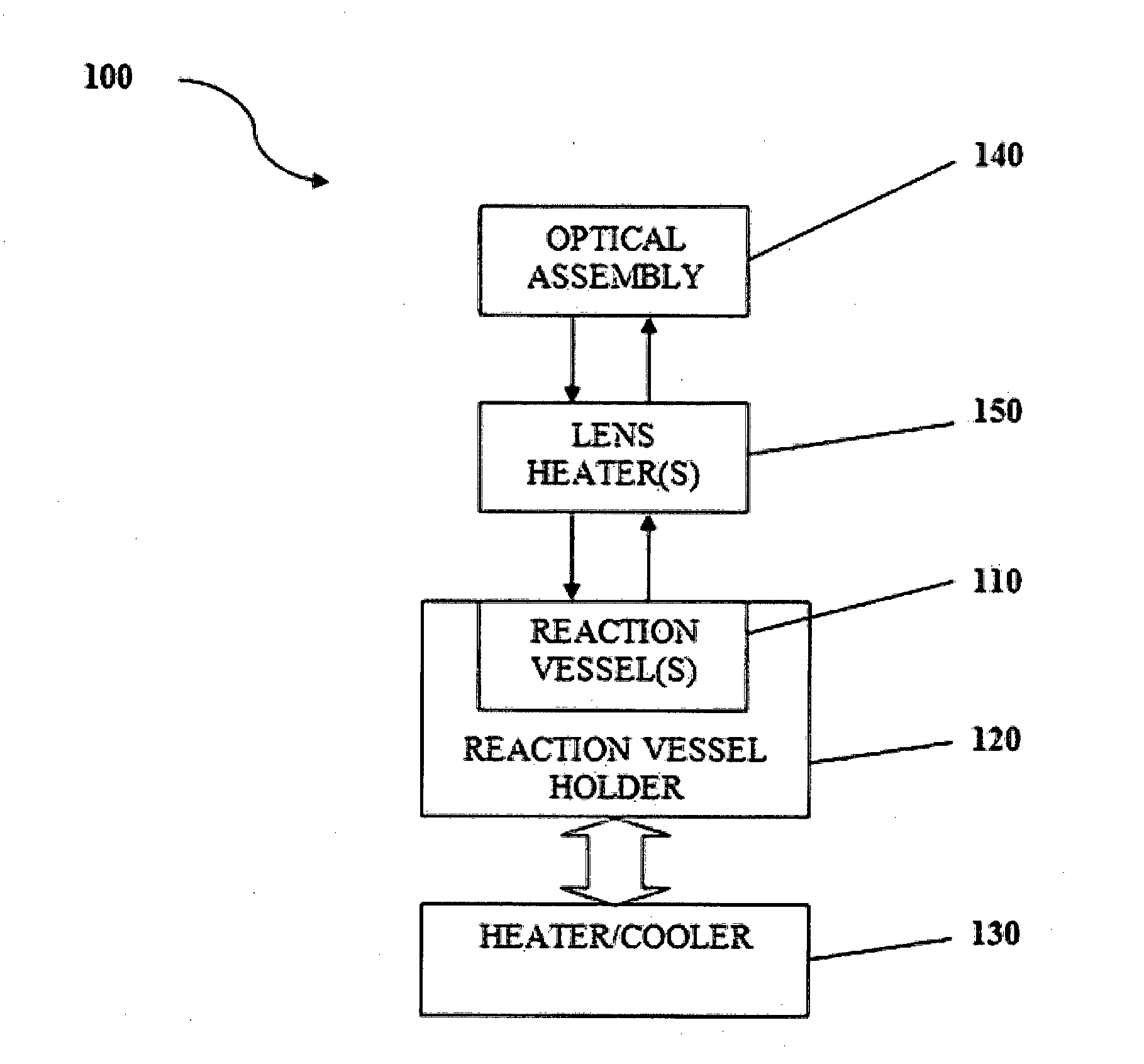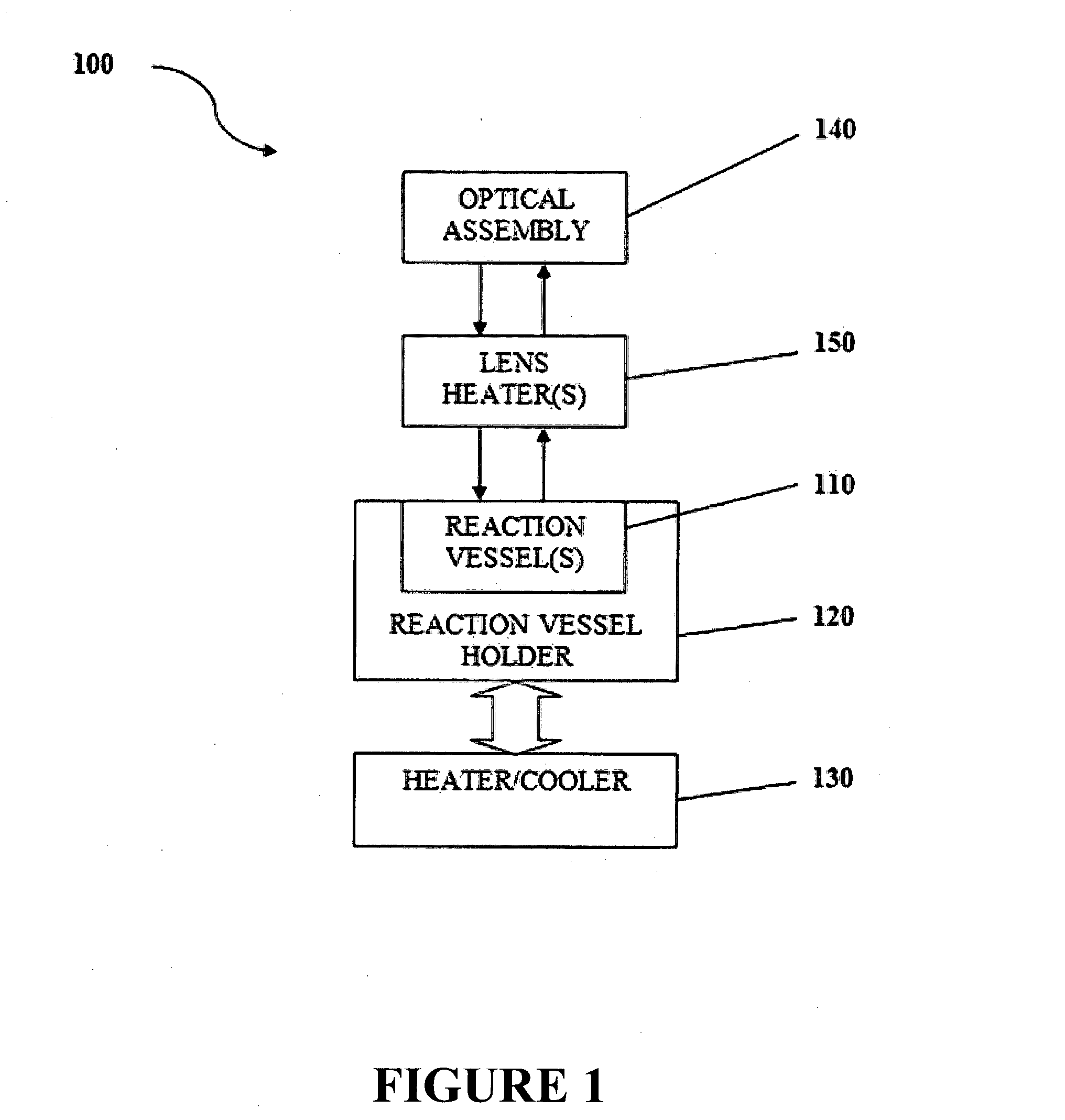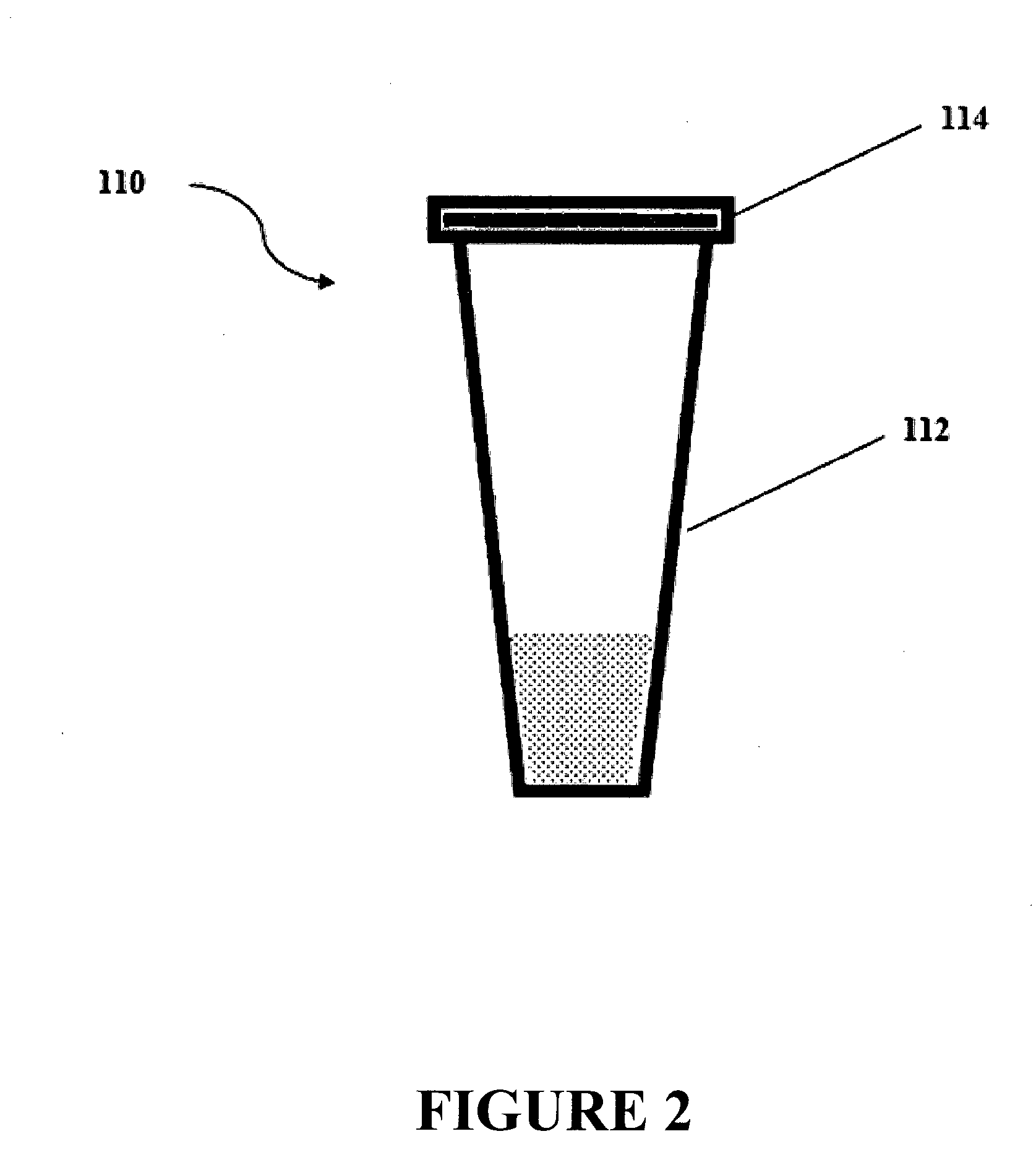Portable device for detecting molecule(s)
a technology for detecting molecules and devices, applied in biochemistry apparatuses, biochemical equipment and processes, component separation, etc., can solve the problems of reducing affecting the optical path, and affecting the accuracy of detection,
- Summary
- Abstract
- Description
- Claims
- Application Information
AI Technical Summary
Benefits of technology
Problems solved by technology
Method used
Image
Examples
first example embodiments
of the Device
The Reaction Vessel Holder
[0245]Referring to FIG. 13, the device comprises a lower casing 80′. The lower casing 80′ houses the reaction vessel holder 120′ and the heater / cooler 130′. The reaction vessel holder 120′ comprises four vessel receptacles 121′, each vessel receptacle being arranged to receive a respective one of the reaction vessels.
[0246]The reaction vessels holder 120′ comprises a housing 122′ which houses the vessel receptacles 121′ and an insulative material 123′ such as aerogel or any other suitable materials described above (or alternatively an air gap) which substantially fills the space between the vessel receptacles 121′ and the housing 122′.
The Heater / Cooler
[0247]Referring again to FIG. 13, the heater / cooler 130′ comprises three TEC devices 131′, two of which are shown in FIG. 13. The TEC devices 131′ are thermally coupled to four vessel receptacles 121′.
[0248]The TEC devices 131′ physically contact a plate 132′ made of a substantially thermally cond...
second example embodiments
of the Device
The Reaction Vessel Holder
[0278]FIG. 24 shows the reaction vessel holder 120″ for the reaction vessel of the second example embodiments of the invention. The reaction holder 120″ is in the form of a cassette housing 121″ that comprises one or more reaction chambers 110″ that can be closed. In the embodiment shown, the reaction vessel holder 120″ comprises eighteen reaction chambers 110″ that are integral with the reaction vessel holder 120″. As previously described, the reaction vessels 110″ may alternatively be removable from the reaction vessel holder 120″.
[0279]The or each reaction chamber 110″ has a low volume and is configured to receive a sample for molecule detection. By having no air gap above the reaction mixture, the need for lens heaters is eliminated. The housing 121″ may be disposable. The reaction vessel holder 120″ is optically transparent on bottom side and on a top side to allow an excitation light to enter the reaction chamber 110″ from the top or bott...
third example embodiments
of the Device
[0307]The third example embodiments of the device are substantially similar to the second example embodiments of the device. One of the differences between the two example embodiments is the beam splitter arrangement. According to the third example embodiments, the secondary tiers in the beam splitter arrangement of the second example embodiments are not present.
[0308]Referring to FIG. 34, the beam splitter arrangement 620′ is configured to split the excitation beam into up to k number of split excitation beams, k being an even integer greater than two, wherein the beam splitters 621a′″-621k′″ are arranged in m number of tiers 623a′-f′″, where m is an integer greater than 1 and k=2×m. A first tier 623a′″ contains one beam splitter 621a′″ that is configured to receive the excitation beam from an excitation arrangement, and to split the incoming beam into two split excitation beams. An ith tier 623b′″-f′″, i being an integer ranging from 2 to m, is configured to receive i...
PUM
| Property | Measurement | Unit |
|---|---|---|
| Fraction | aaaaa | aaaaa |
| Fraction | aaaaa | aaaaa |
| Wavelength | aaaaa | aaaaa |
Abstract
Description
Claims
Application Information
 Login to View More
Login to View More - R&D
- Intellectual Property
- Life Sciences
- Materials
- Tech Scout
- Unparalleled Data Quality
- Higher Quality Content
- 60% Fewer Hallucinations
Browse by: Latest US Patents, China's latest patents, Technical Efficacy Thesaurus, Application Domain, Technology Topic, Popular Technical Reports.
© 2025 PatSnap. All rights reserved.Legal|Privacy policy|Modern Slavery Act Transparency Statement|Sitemap|About US| Contact US: help@patsnap.com



